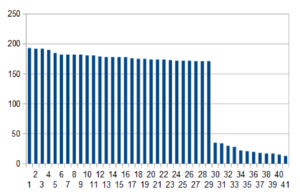Horror vacui. At the beginning of each calendar year, we are all accustomed to adding up our US utility patent totals and US trademark totals, and sending them to Intellectual Property Today magazine so that they may be listed in the IP Today tote boards. But as far as I can tell, IP Today is out of business.
As you know, for two years now this blog has sponsored a US design patent tote board. The apparent demise of IP Today has prompted me to set up successor tote boards for US utility patents and US trademark registrations.
If you would like your firm to be listed in the 2015 US design patent tote board, please act quickly because I plan to close responses for that tote board at the end of the day on February 1, 2016.
If you would like your firm to be listed in the 2015 US utility patent tote board, please respond here by February 15, 2016.
If you would like your firm to be listed in the 2015 US trademark registration tote board, please respond here by February 15, 2016.
These tote boards won’t serve their readers well unless nearly everybody gets listed. So please forward this blog post to everybody you know who might like to be listed and who might not be aware of this opportunity.

 itions in the Office of Patent Petitions (OPP). OPP is just now getting around to deciding PPH petitions filed last August. Here are actual figures for forty-nine PPH petitions filed last August.
itions in the Office of Patent Petitions (OPP). OPP is just now getting around to deciding PPH petitions filed last August. Here are actual figures for forty-nine PPH petitions filed last August.